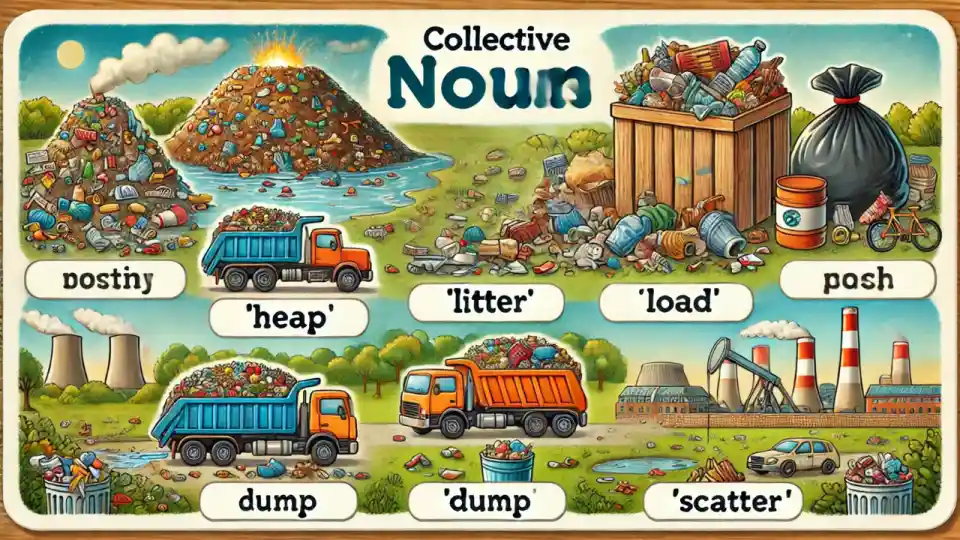Trash also known as garbage or waste, often accumulates in groups whether in bins streets or natural environments. While not often thought about, there are creative collective nouns that describe trash in specific situations. These terms can be literal or imaginative, reflecting the nature of waste in different contexts. Let’s explore the collective nouns for trash and see how they are used.
Collective Noun for Trash in Table
Here are some common and creative collective nouns used for trash
| Collective Noun | Meaning |
|---|---|
| Heap | A pile of trash gathered together |
| Litter | Scattered trash, especially in public spaces |
| Load | A large amount of trash, often being transported |
| Dump | A massive collection of trash in one place |
| Scatter | Trash spread haphazardly across an area |
Detailed Explanations and Examples for Trash
1. Heap
A heap refers to a pile of trash that has been gathered in one spot.
- Example 1: A heap of trash sat behind the restaurant, waiting to be collected.
- Example 2: The heap of trash in the landfill grew larger every day.
- Example 3: After the party, we collected a heap of trash from the backyard.
2. Litter
Litter describes trash that is scattered across a public area, often as a result of carelessness.
- Example 1: The park was full of litter after the weekend festival.
- Example 2: Volunteers gathered to clean up the litter along the beach.
- Example 3: A sign near the hiking trail reminded visitors not to leave litter behind.
3. Load
Load is used to describe a large quantity of trash, especially when it’s being transported or collected.
- Example 1: The truck carried a load of trash to the recycling center.
- Example 2: A heavy load of trash was dumped into the bin by the workers.
- Example 3: Each day, the city disposes of countless loads of trash from households.
4. Dump
A dump refers to a large, permanent collection of trash, often in a designated area like a landfill.
- Example 1: The old dump outside of town was overflowing with trash.
- Example 2: A dump of trash near the river became a concern for the local community.
- Example 3: The waste management team worked to clean up an illegal dump of trash in the forest.
5. Scatter
Scatter is a descriptive term for trash that is spread loosely over an area.
- Example 1: After the storm, a scatter of trash was left along the streets.
- Example 2: The scatter of trash across the field was an eyesore for visitors.
- Example 3: Strong winds turned a neatly piled heap into a scatter of trash overnight.
Conclusion
Trash is an unavoidable part of modern life, and the collective nouns used to describe it like heap, litter and load help us paint a picture of how it is accumulated and managed. These terms remind us of the importance of keeping our surroundings clean and disposing of waste responsibly. Next time you encounter trash use one of these terms to describe it and take a step toward reducing it.
